The Intelligent Ground Vehicle Competition (IGVC), Michigan, is one of the leading competition in the field of autonomous vehicles. The participants have to develop an autonomous ground vehicle which can navigate through a constrained environment while avoiding multiple obstacles on the path. The robot should also be able to navigate through a set of GPS way-points while following lanes and avoiding obstacles.
Eklavya Series are the intelligent ground vehicle designed by the AGV research group, for the IGVC competition.
I was directly involved in the development of Eklavya 6.0 and 7.0.
The Eklavya 6.0 and 7.0 both performed equally well as the team grabbed the second position in both the editions. In addition to that, Eklavya 7.0 was given recognition for the first team to qualify for the finals.
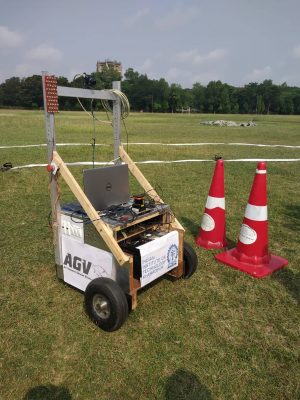
Eklavya 7.0
January 2019 – June 2019
- Runner up of the AutoNav challenge of IGVC 2019.
- First Team Qualification Award
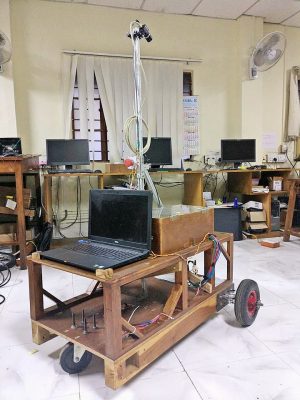
Eklavya 6.0
January 2018 – June 2018
- Runner up of the AutoNav challenge of 26th Intelligent Ground Vehicle Competition (IGVC) 2018.
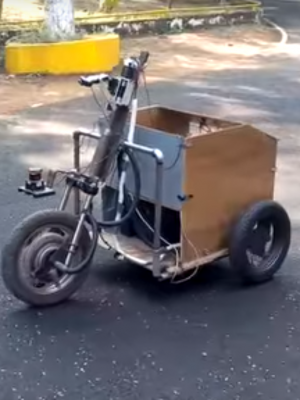
Eklavya 5.0 and 4.0
January 2016 – June 2017
For Details : [Report]
About :
Eklavya is a prototype series of a level 2 autonomy ground vehicle, designed for the Annual Intelligent Ground Vehicle Competition, held at Oakland University in Rochester, Michigan, USA.
Eklavya is fully designed from scratch starting from mechanical design, manufacturing, Power Distribution, Embedded architecture and a full scale software stack. It is capable of navigating through a course following lane markers and GPS while avoiding obstacles and potholes. Robot Operating System (ROS) is used for inter-module communication and all processing is done on a single laptop.
Different modules of Evlavya 6.0 & 7.0 includes
- Embedded Architecture
- Power Distribution
- Control System
- Localization
- Planning
- Lane detection, curve fitting and waypoint generation
- Obstacle and Pothole Detection and avoidance.
Eklayva 7.0 Testing Run
Eklavya 6.0 Winning Run
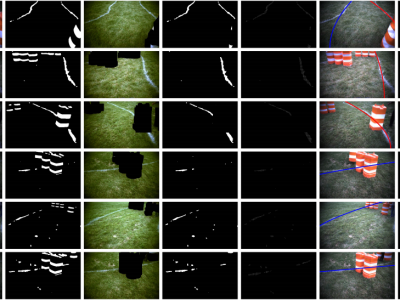
The main objective of the vision module was giving a waypoint to the planning module. The lane features were extracted using combination of various image channels. A lane model estimate was determined(linear or parabolic). The lane model parameters were determined using RANSAC, an iterative algorithm, which is robust to outliers.
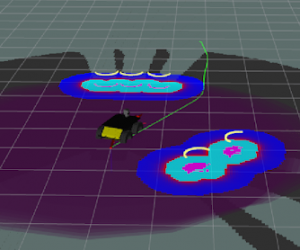
A variety of sensors were mounted on the robot, including a lidar and a front facing camera. Using these sensors, a costmap of the surrounding area was build. Path planning was carried out using the waypoint generated by the vision module. A global path estimate was first made over which a local path was planned considering the vehicle dynamics and state.
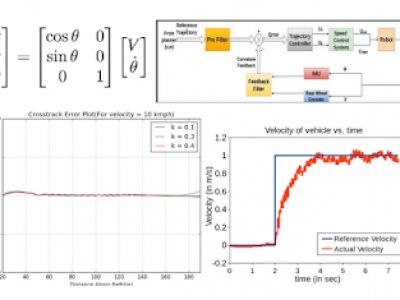
The main goal of this module was to traverse the vehicle over the desired trajectory. A Low level controller used a simple PID controller to actuate the motors, while a high level controls algorithm called MPC(Model Predictive Control) was used to generate the velocity profile over the inputted trajectory.
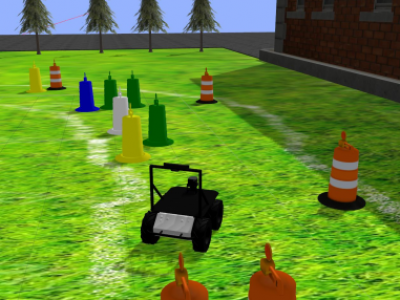
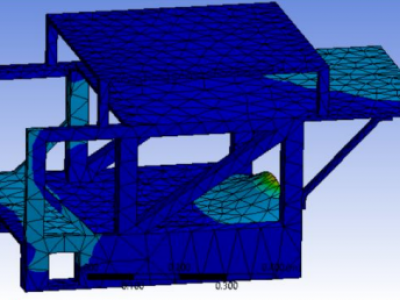
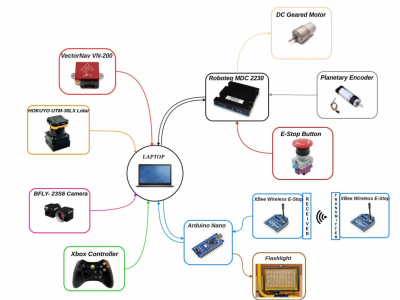
Embedded Module includes Integration of Sensors, Power Management, Battery Management System, Safety and Fail-safe, Wireless Communication and Networking setup.
It also includes the Drive-by Wire setup, which enables the prototype to be controlled by wireless joystick.
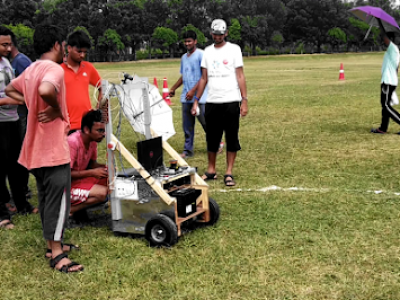
A team of 15-20 people worked for over a month during both the summers to carry out the product development using a Lean Ideology->
CODE -> Test -> Feedback -> CODE
I had plenty of sleepless nights during these 2 months, and obviously learnt a lot from this experience.
Click on the following Tabs to know more :
Mechanical innovations
We are using aluminium sheets for waterproofing, which has several advantages –
- It is very lightweight, so it does not shift the center of mass.
- It acts as a heat sink for the processing unit kept on top of it.
We have made a new fordable cover for the electronic systems which serves multiple purposes
- It protects the electronics of the robot from exposure to natural elements.
- It acts as a surface for keeping the processing unit and mounting some sensors.
Castor wheel suspension has been used.
Electronic innovations
- Unscented Kalman Filter-Based Battery SOC Estimation and Peak Power Prediction.
- Reverse polarity protection has been incorporated using MOSFET
Software innovations
- Obstacles have been detected from both vision and LiDAR sensors for higher reliability.
- Raw GPS data has lower accuracy than we require, so we have fused it with odometry to get a better estimate for the GPS.
- Shadows have been removed based on variance properties in YCrCb color space.
- Potholes have been detected by exploiting the constraint that the ratio of the root of the area by perimeters constant for circles.
Click on the Paper Title below for Link to the Published Papers.
1. Design and Development : Prototype of an Intelligent Ground Vehicle for constrained environment
2. Real-time Lane Detection, Fitting and Navigation for Unstructured Environments
Click on the Paper Title below for Link to the Published Papers.
1. Design and Implementation of an Intelligent Ground Vehicle for constrained environment.
2. Off-Road Lane Detection Using Superpixel Clustering And RANSAC Curve Fitting
